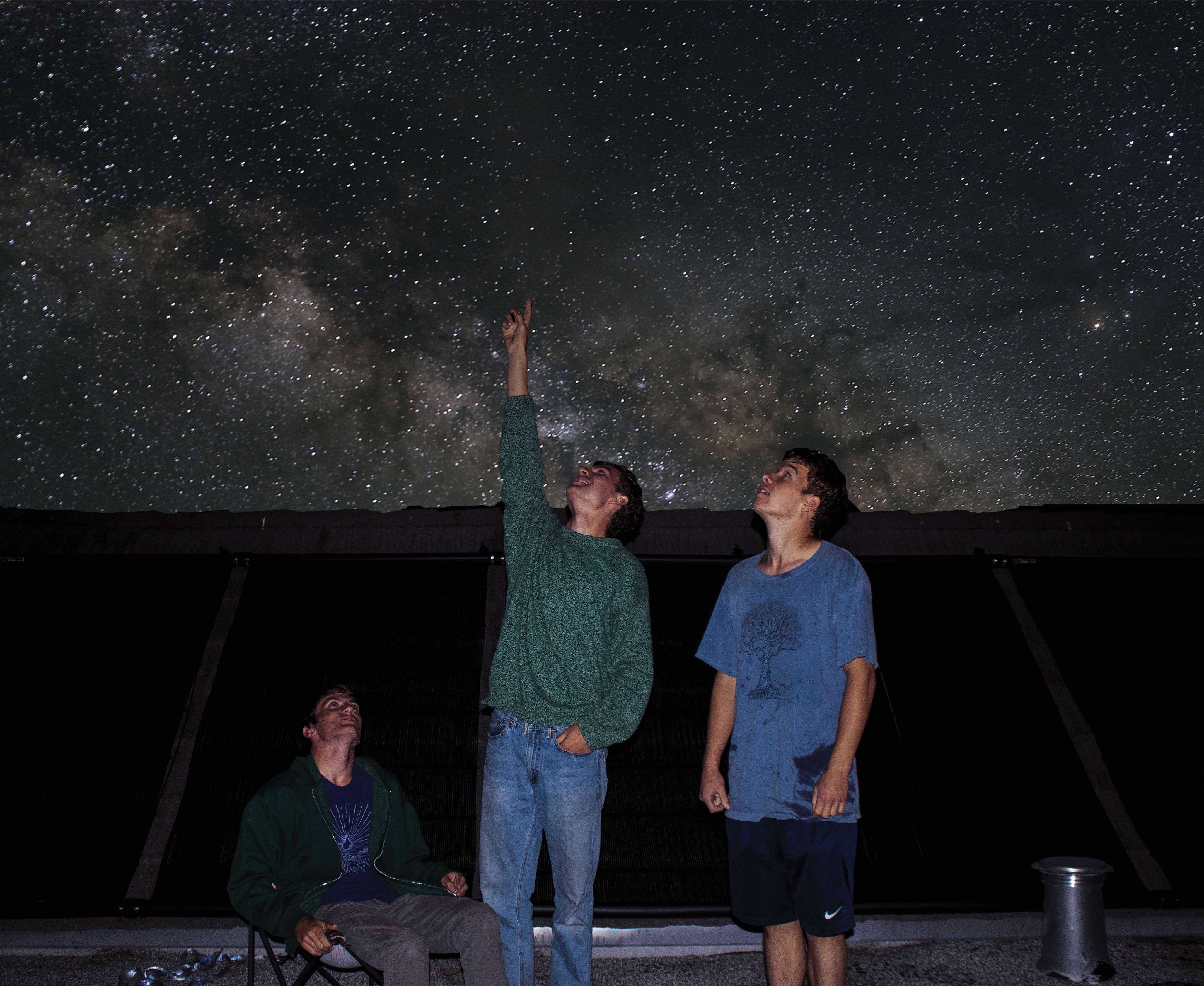Editor’s note: The printing of the October 2018 issue of Veritas was funded by the advertisements found below.
The road to Alpine Inn in Portola Valley is winding, and seems especially so at 11 p.m. The Inn’s parking lot is a short distance from the mouth of the trail that leads up an inconspicuous hill, overlooking the bay. It takes about 15 minutes to walk to the top, which is marked by a rickety wooden bench and a grand oak tree. Here, the view offers a juxtaposition between the man-made lights of the city below and the natural twinkling lights of the stars above.
Palo Alto High School seniors Miles Shulman and Lucas Washburn, along with their friends, cite this secluded Arastradero hill as one of their go-to stargazing locations.
This is partly because this spot is the most convenient in terms of transportation, according to Shulman. It is a short drive and a relatively close bike ride away from home, enabling this group of friends to star gaze around once a month.
Shulman and Washburn enjoy the calmness of simply lying down on the ground and looking at the sky above.
“It’s peaceful … a combination of tranquil and humbling,” Shulman says. “It’s what we talk about in Astrophysics: how big the universe is and how relatively small we are.”
Both Shulman and Washburn take the Astrophysics course taught at Paly by Josh Bloom. Since it’s only the beginning of the year, students are not very far into the curriculum, so most of Washburn’s knowledge comes from his father, who majored in Astrophysics in college.
“It’s peaceful… a combination of tranquil and humbling.”
— Miles Shulman, senior
According to Washburn, as a young boy, he and his father would take the family telescope to the Foothills at night and look at the planets, a tradition Washburn hopes to revive this year.
Washburn begins to rattle off space facts, an action his close friends describe as “spamming.” Once he gets started, it seems like he can’t stop.
“We have never actually seen the Milky Way. When one sees pictures of galaxies, it’s usually the Andromeda Galaxy, which is the nearest one, and people confuse that for the Milky Way because they look the same; they are both spiral galaxies,” Washburn says. “But we have never seen it because we are inside of it; what we see is a line, which is a ring of our galaxy.”
Washburn continues, “We have only seen one side of the moon ever because it rotates at the same rate that it orbits the earth.”
Washburn also learns some of his space facts from an unusual source. “There is this band called They Might Be Giants,” Washburn says. “They made a science album and one of their songs is about the sun. They say that the sun is made of plasma, which is not a gas, liquid, or solid, it’s actually a fourth state of matter.”
Both boys are able to identify the constellations above such as the Big and Little Dipper, but Washburn suggests that sometimes it’s more fun to make up one’s own constellations.
As he says this, Washburn points his finger towards a series of five stars in the sky that create a lightning bolt, though some friends pipe in, thinking it looks like the number three.
Washburn and Shulman agree that soaking in the view, catching the occasional shooting star, and enjoying their friends’ presence is what makes the stargazing excursions worthwhile.
Humans have been looking up at the stars for as long as we have existed, and Shulman suggests that high schoolers should take time out of their schedules, away from their phones, to continue this age old tradition.
Washburn adds in a suggestion to don some headphones, play “Here Comes Science” by They Might Be Giants and admire the thousands of stars above.



